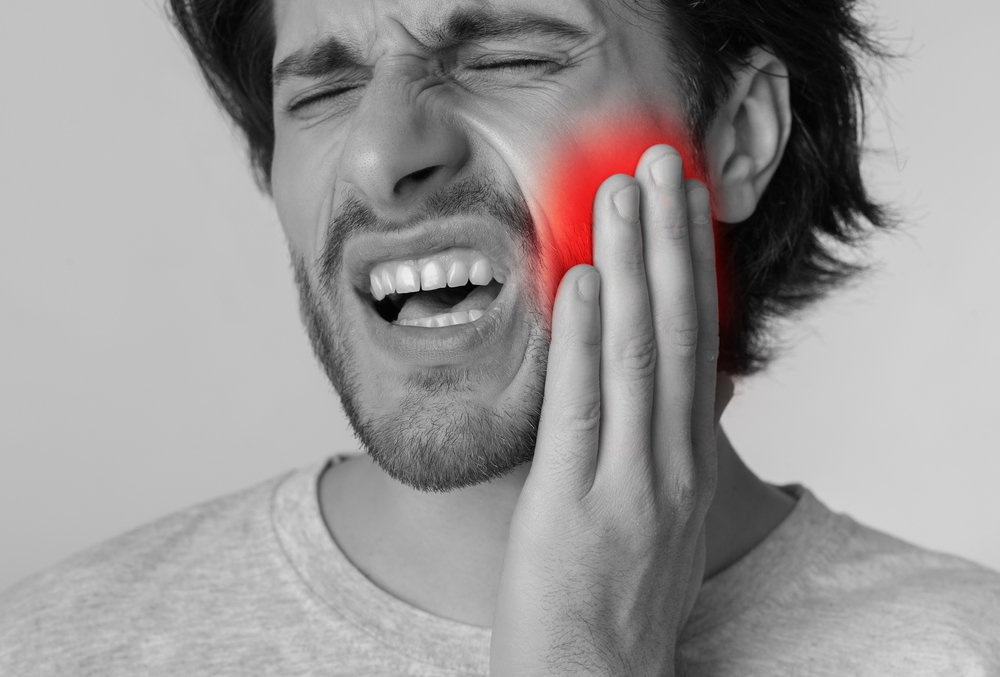

Lost Filling? Don’t Panic!
Losing a filling can be distressing, but rest assured, we’re here to provide you with professional guidance and actionable steps to handle the situation effectively. Whether you’re experiencing pain or seeking preventive measures, our comprehensive insights will empower you to make informed decisions regarding your dental health.
Trust our exceptional dentists and our dental team to equip you with the knowledge you need for optimal oral care.
What to Do If You Lose A Filling
If you discover that you have a lost filling, follow these steps to manage the situation effectively:
- Don’t Panic: Losing a filling can be unsettling, but try to stay calm. Panicking can make the situation feel worse than it actually is.
- Rinse Your Mouth: Gently rinse your mouth with warm salt water to cleanse the area and reduce the risk of infection occurring.
- Save the Filling (If Possible): If you find the lost filling, safely store it in a clean container or plastic bag. This can help your dentist assess the damage and determine the best course of action.
- Contact Your Dentist: Call your dental office as soon as possible to schedule an appointment. Explain the situation and your dental team will provide guidance and arrange a suitable time for your visit.
How Long Can I Wait for an Appointment?
When a filling falls out, it’s essential to see a dentist immediately. However, the urgency depends on your individual circumstances. Generally, try not to wait more than a few days to seek professional care after a filling has fallen out.
Ignoring a lost filling can lead to complications such as tooth sensitivity, pain, further decay, or damage to the tooth structure. Acting promptly ensures timely treatment and reduces the risk of more extensive dental issues.
My Filling Fell Out, but it Doesn’t Hurt
Although a lost filling may not cause immediate pain, it’s crucial not to disregard the situation. Even if there’s no discomfort, the absence of a filling leaves your tooth vulnerable to bacterial infection and further damage. Contact your dentist for an evaluation of the tooth and an appropriate treatment. Remember, early intervention is key to preserving your oral health and avoiding potential complications down the road.
Temporary Fixes
While waiting for your appointment, you can take certain steps to minimize discomfort and protect the affected tooth:
- Over-the-Counter Dental Cement: Visit a local pharmacy and purchase temporary dental cement. Carefully follow the instructions to apply the cement and secure the exposed tooth surface temporarily.
- Dental Wax: Dental wax, available at most drugstores, can be used to cover any sharp edges or jagged areas, providing a protective barrier for your tongue and cheeks.
- Clove Oil: Clove oil has natural analgesic and antibacterial properties, making it a useful temporary remedy for a lost dental filling. Soak a cotton ball in clove oil and gently place it in the cavity, allowing it to numb the area and provide temporary relief from any discomfort. Remember to remove the cotton ball before eating or drinking.
Remember, these temporary fixes are only meant to provide short-term relief until you receive professional dental care.
Pain Relief
If you experience any discomfort or sensitivity due to a lost filling, you can try the following pain relief measures:
- Over-the-Counter Pain Relievers: Non-prescription pain medications such as ibuprofen or acetaminophen can help alleviate mild to moderate pain temporarily. Follow the dosage instructions and consult with a pharmacist if needed.
- Avoid Hot or Cold Foods: Sensitive teeth can worsen when exposed to extreme temperatures. Stick to lukewarm or room-temperature foods and beverages to minimize discomfort.
However, pain relief measures aren’t a substitute for professional dental care. While these measures may provide temporary relief, they don’t address the underlying issue. It’s crucial to visit your dental office for a thorough evaluation and appropriate treatment.
Frequently Asked Questions
Can a lost filling heal on its own?
No, a lost filling cannot heal on its own. Once a filling falls out, it exposes the tooth to bacteria, increasing the risk of decay and infection. Without the protective barrier provided by the filling, the tooth’s structure becomes vulnerable.
Is it normal to experience sensitivity after a filling falls out?
Yes, it’s common to experience sensitivity after a filling falls out. The exposed tooth may become sensitive to hot, cold, sweet, or acidic foods and beverages. Sensitivity occurs because the dentin, the sensitive layer beneath the tooth’s enamel, is now exposed. The sensitivity from an exposed tooth indicates the need for dental attention to prevent further damage or infection. Your dentist can evaluate the tooth, determine the cause of sensitivity, and recommend suitable measures to alleviate discomfort and restore oral health.
Will I need a new filling or a different dental restoration?
Your dentist will carefully examine your tooth to determine the most suitable treatment option. In some cases, a new filling may be sufficient to restore the tooth. However, if the damage is extensive or the tooth is weakened, a different dental restoration such as a dental crown or inlay/onlay may be recommended.
How can I prevent fillings from falling out in the future?
While fillings can occasionally fall out due to natural wear and tear over time, there are steps you can take to minimize the risk:
- Maintain good oral hygiene
- Visit your dentist for regular checkups
- Avoid chewing on hard or sticky foods
- Wear a mouthguard during physical activities
Act Fast for Pain Relief
Are you dealing with the discomfort and worry of a lost filling? Don’t let the pain linger and the anxiety grow. Take control of your dental health today by reaching out to our Staten Island dental team. Our dedicated team is here to listen, provide immediate assistance, and guide you toward the most suitable solution for your unique situation.
Remember, delaying action may lead to further complications, so don’t hesitate to take that important step toward a healthier, pain-free mouth.


